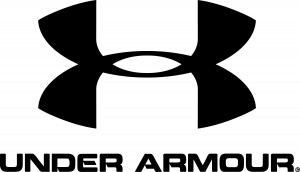Under Armour is a sports apparel company that did just a bit more than $3 billion in sales last year. It is an American success story. The owner started the company in 1996, making clothing in the basement of his grandmother’s house, and he drove up and
down the east coast extolling the virtues of his product. Kevin Plank’s first big break came after a $17,000 sale. I would imagine most of his production is accomplished off-shore in China and Indonesia.
Under Armour lives in a world that is athletic and aspirational; young and hard-charging. Their clothing is appeals to the physically fit and to those wanting to be. You don’t grow from zero to billions without tremendous drive and ambition. It takes a lot of money to get universities and athletes to “adopt” your brand, and make no mistake that in that world, money talks. So sometimes you’ve got to play it a little loose and a little edgy.
The company has had its share of legal tiffs, but they have been mainly in the realm of patent and copyright infringement; the back and forth of dealing in the competitive marketplace against companies the likes of Nike and Skechers.
Ethically, in the hard-charging and edgy world in which the company lives, there are people within the company who act before they think. I understand it. When hard-charging pays off, it is easy to reward the hard-chargers, and other hard-chargers give him or her the green light. The only thing that keeps it in check is having an ethical sense, and having someone in the organization say, “You know, that just may be crossing the line. Ethically, it will reflect badly on our company.”
Under Armour, meet Ethics
Under Armour decided to launch an edgy T-shirt. The shirt was called “Band of Ballers,” a take-off on the “Band of Brothers,” the book and movie series about the U.S. Marines who hoisted the American flag on Iwo Jima. It is an iconic image because of the price that was paid. The shirt shows the silhouettes of basketball players hoisting a pole with a basketball rim, much like the iconic hoisting of the American flag.
We are a nation with a pathetically short, gnat-like memory and perhaps someone at Under Armour should have known or read that the battle was not a part of a WWII video game, but a real-life event that happened about 70 years ago.
The battle for Iwo Jima took about five weeks and nearly 7,000 American soldiers died of the 70,000 who invaded. Nearly 20,000 Americans were wounded and goodness knows how many more lived their lives with PTSD from the horrendous aspects of the battle. The Japanese lost nearly 19,000. Many committed suicide rather than risk capture.
The social and electronic media exploded with outrage when news of the shirts came to light. The company pulled the shirts and made the following statement:
“We deeply regret and apologize that a t-shirt that was not reflective of our values in honoring and supporting our country’s heroes went on sale.”
Interestingly, the company also said it “would take steps to ensure this doesn’t happen again.”
As for the shirt
As for the shirt, yes it was insensitive and in its own way, very immature and ignorant. It should go without saying that it was an insult to any family who lost friends and relatives in that battle. I am quite sure that the grandmother of the founder of Under Armour; the woman who allowed her grandson to start his American Dream in her basement, might have had a few things to say about the shirt as well.
However, it goes far beyond the shirt itself and its edgy play on words. I would be willing to go out on a limb and say that the founder of Under Armour never saw the shirt and never approved it. I might take an additional risk and say no one in senior management was aware of the shirt either. It was pushed along the manufacturing timeline, from artist’s conception through to distribution without anyone in authority challenging its creation or even its reason for being.
The shirt is emblematic where the heart and core values of the company became separated from the products they produce. Is the shirt the worst crime ever committed by a company? Of course not. It was a stupid blunder. However, it is an incident that was allowed to occur because there were no ethical borders and no ethical governance.
I believe the company saying that it would take steps, is a statement reflective of the very highest levels of management; perhaps the founder himself. I would recommend company-wide ethical training as a start; 70 years ago, men such as those who died on Iwo Jima and elsewhere fought for the right to allow the American Dream to continue. If nothing else, a change in ethical policy is a way for Under Armour to thank them.




Chuck: Awesome. I recommended (early 1990s) ago that my alma mater, Mills College, Oakland CA, have a course in ethics that I hoped would find its way into their Business major curriculum. They did add a ethics course but I do not believe it lasted. Too bad.
I see this a lot with major corporations copying up and coming designers – the values of the founders would be incompatible with the behaviour, so why does it happen? For exactly the reasons you state. It’s often though that the intern who took the lazy design and put it into production was under pressure to do so, and that their direct manager was not communicating that values matter more than volume (in output), but that of course doesn’t excuse it. As a small company, I can’t understand how growth can remove the need to ensure that everything you put out there represents you.